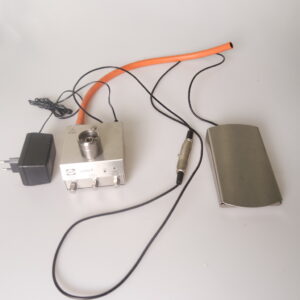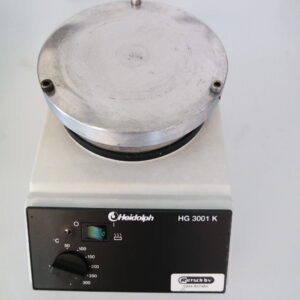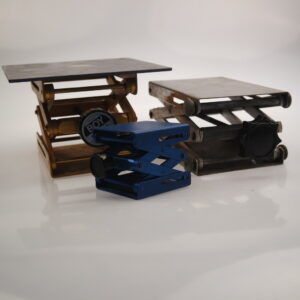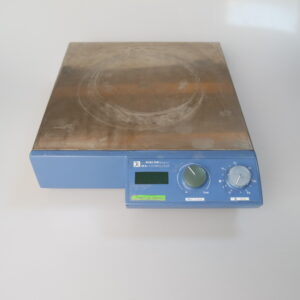Description
This used Harry Gestigkeit ST91 sand bath with temperature control was never used in practice and is therefore in an “as new” state. A sand bath is a common piece of laboratory equipment made from a container filled with heated sand. It is used to provide even heating for another container, most often during a chemical reaction.
The used Harry Gestigkeit ST91 sand bath with variable temperature control consist of an aluminium alloy hotplate with a screwed-on, sealed stainless steel frame with a usable height of 50 mm. The sand lays direct of the hotplate. The housing is constructed from high-grade, stainless steel, whereby the central section has been additionally sprayed in orange. Because of the asymmetrical, long-term heating system (hotplate corners and edges are subjected to more heat) an even temperature is guaranteed over the entire heating surface.
Specifications:
- Model: ST91
- Temperature range: 30-110 °C
- Power: 2000 W
- Plate dimensions: 440×590 mm (WxD)
- Height heating bath: 220 mm
- Manufacturer: Harry Gestigkeit.
- Weight 28 kg
- 4 adjustable feet ensure extra stability.
- Connecting cable approx. 1,7 m long,
- 230 Volt/3200 Watt with Schuko plug
- Newprice: €1700
A sand bath is most commonly used in conjunction with a hot plate or heating mantle. A beaker is filled with sand or metal pellets (called shot) and is placed on the plate or mantle. The reaction vessel is then partially covered by sand or pellets. The sand or shot then conducts the heat from the plate to all sides of the reaction vessel.
This technique allows a reaction vessel to be heated throughout with minimal stirring, as opposed to heating the bottom of the vessel and waiting for convection to heat the remainder, cutting down on both the duration of the reaction and the possibility of side reactions that may occur at higher temperatures.




